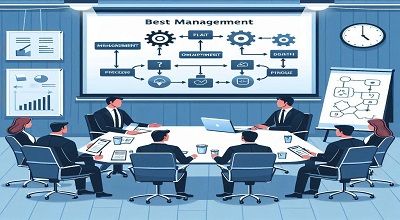Best Management Practices
Best Management Practices (BMPs) refer to a set of guidelines, strategies, and techniques designed to minimize environmental impacts and promote sustainable practices in various industries and activities. BMPs are typically developed to address specific challenges and issues related to resource management, pollution prevention, and overall environmental stewardship. The specific practices can vary depending on the industry or activity, but the goal is generally to achieve a balance between economic interests and environmental protection.
Here are some common examples of Best Management Practices in different contexts:
Agriculture
- Crop rotation and diversification to improve soil health.
- Precision agriculture techniques to optimize resource use.
- Conservation tillage to reduce soil erosion.
Construction
- Erosion control measures, such as silt fences and sediment basins.
- Proper disposal of construction waste.
- Stormwater management to prevent runoff pollution.
Stormwater Management
- Green infrastructure, such as permeable pavements and green roofs.
- Retention ponds and biofiltration systems to manage stormwater runoff.
Forestry
- Sustainable logging practices to protect biodiversity.
- Riparian buffer zones to protect water quality.
- Reforestation efforts to restore and maintain forest ecosystems.
Urban Planning
- Zoning regulations to control land use and prevent overdevelopment.
- Public transportation initiatives to reduce traffic congestion and air pollution.
- Recycling programs and waste reduction strategies.
Industrial Processes
- Implementation of cleaner production technologies.
- Waste minimization and recycling programs.
- Energy efficiency measures to reduce greenhouse gas emissions.
Mining
- Proper waste disposal and reclamation of mined areas.
- Dust control measures to minimize air pollution.
- Water management strategies to prevent contamination.
Water Conservation
- Efficient irrigation practices in agriculture.
- Public awareness campaigns to promote water conservation.
- Implementation of water-saving technologies in industries.
Aquaculture
- Sustainable fish farming practices.
- Monitoring and control of water quality.
- Minimization of escapes and interactions with wild species.
BMPs are often developed in collaboration with government agencies, environmental organizations, and industry stakeholders. They play a crucial role in promoting environmentally responsible practices and ensuring the long-term sustainability of natural resources.
Example of a Management Practice
An example of a management practice is Performance Management. Performance management involves activities and processes that ensure goals are consistently being met in an effective and efficient manner. It encompasses planning, monitoring, and reviewing employee performance and development in order to contribute to the overall success of an organization.
Here are some key elements and practices within performance management:
- Goal Setting: Managers work with employees to set specific, measurable, achievable, relevant, and time-bound (SMART) goals that align with the organization’s objectives.
- Regular Feedback: Managers provide ongoing feedback to employees about their performance. This includes both positive reinforcement for accomplishments and constructive feedback for areas that need improvement.
- Performance Reviews: Formal evaluations are conducted periodically (often annually) to assess an employee’s overall performance, discuss achievements, identify areas for development, and set new goals for the upcoming period.
- Development Planning: Managers and employees collaborate on creating development plans that outline opportunities for skill enhancement, training, and career growth.
- Recognition and Rewards: Acknowledging and rewarding employees for their contributions and achievements is an important aspect of performance management. This can include financial incentives, promotions, or other forms of recognition.
- Communication and Alignment: Ensuring that individual goals align with organizational objectives and communicating the broader vision helps employees understand their role in contributing to the overall success of the company.
- Performance Improvement Plans: In cases where an employee’s performance is not meeting expectations, a structured plan may be developed to help the employee improve and meet the required standards.
Note
Effective performance management practices contribute to employee motivation, engagement, and overall organizational success.
